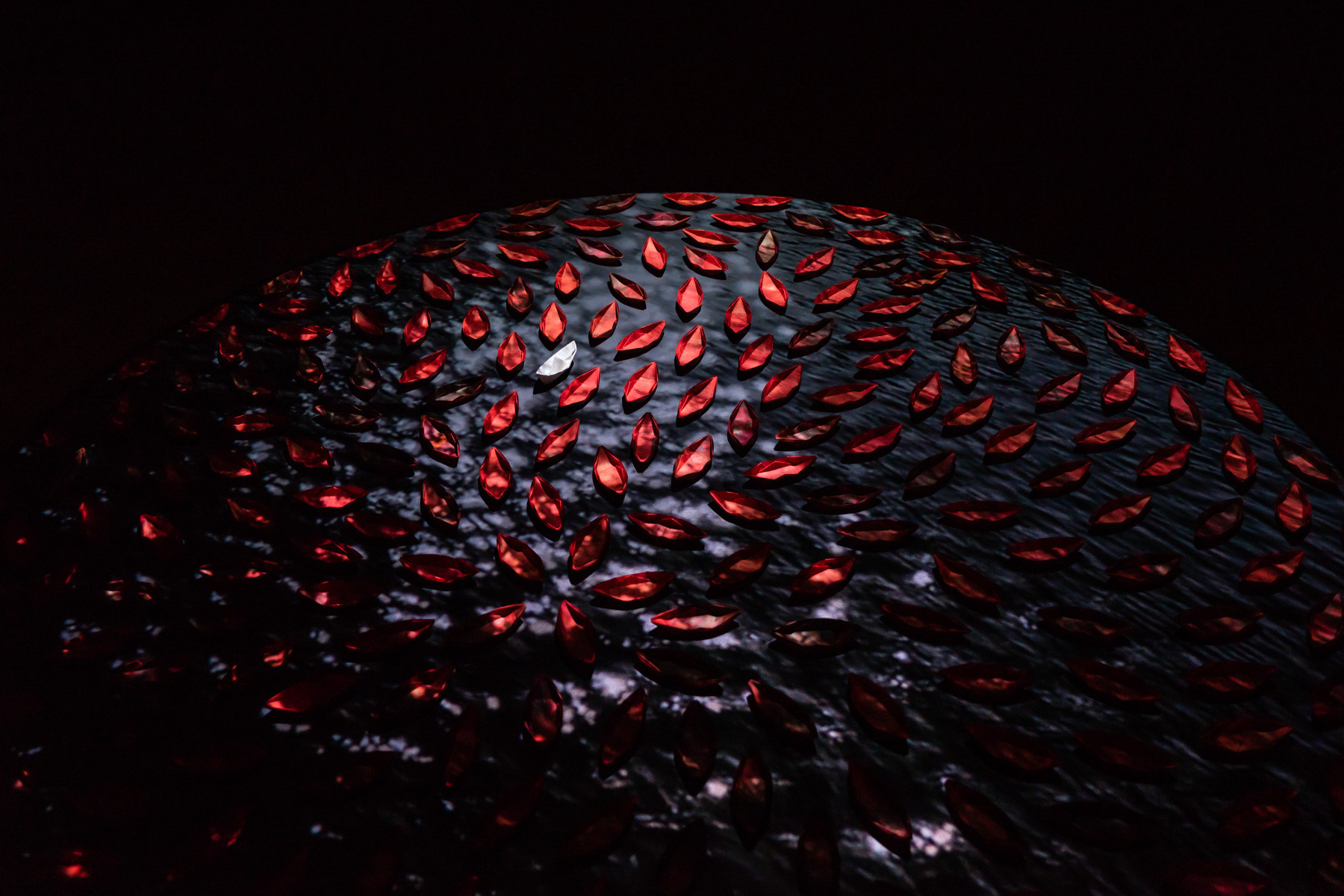'un/bound passage' 2019
hand-dyed and folded paper installation from pages of 'The Voyages of Captain Cook' Ladybird Book, with video projection
hand-dyed and folded paper installation from pages of 'The Voyages of Captain Cook' Ladybird Book, with video projection
Photography: Carl Warner
"In an act of defiance and resistance I am going to take his (James Cook's) legacy and cut it, fold it, transform it and arrange it into something that can carry my words and my story." Jenna Lee
Created for and first exhibited in 'Rite of Passage' curated by Shannon Brett at the QUT Art Museum
"A rite of passage is an event that marks an important stage in someone's life, or death – a transition. During a time not so long ago, the Aboriginal population of this country transitioned from a free civilisation to a nation conquered. In the process, thousands of years of ecological and spiritual power and cultural knowledge were diminished, and many customs and traditions of our original people were lacerated – with many lost forever." - Shannon Brett

Photography: Carl Warner

Photography: Carl Warner

Photography: Carl Warner

Photography: Carl Warner

Photography: Carl Warner

Photography: Carl Warner
I am a descendant of the Larrakia, Karrajarri, and Wardaman people, and I also have mixed Chinese, Japanese, Filipino, and European Australian heritage. I was living in London when I created this work.
My core mediums are paper, books, and language. My work, titled "un/bound passage," is part of a rite of passage series and is made using the pages of multiple copies of the Ladybird history book "The Adventures of Captain Cook."
The title "un/bound passage" speaks to two types of journeys: the Endeavour's voyage from the UK to Australia 250 years ago and a passage within a book. As with many of my works, I am interested in the unbinding and rebinding of books and the transformative power that comes through analysing, deconstructing, and reconstructing the original text.
The process for this work involved unbinding, hand-dyeing, and folding these pages into the form of 251 paper boats.
Within the work, 250 red canoe boats represent the many—the numerous boats from First Nations people as well as the vessels that visited our shores for hundreds of years before Cook, in particular the Makassar Traders.
The choice of red is significant; it represents blood. While some may interpret this as bloodshed, I intend that it symbolises blood ties and cultural connections.
The choice of red is significant; it represents blood. While some may interpret this as bloodshed, I intend that it symbolises blood ties and cultural connections.
Red is also a very lucky colour in Southeast Asian culture, and as I dyed each individual piece of paper, I wished them luck on their passage.
The 251st boat is a white boat with sails, representing the one. I am interested in the power we attribute to the singular narrative and how that story permeates the strongest. This particular boat uses Larrakia white ochre - an act of reclaiming the power of the one for our people.